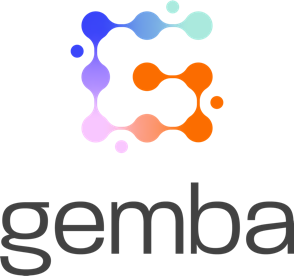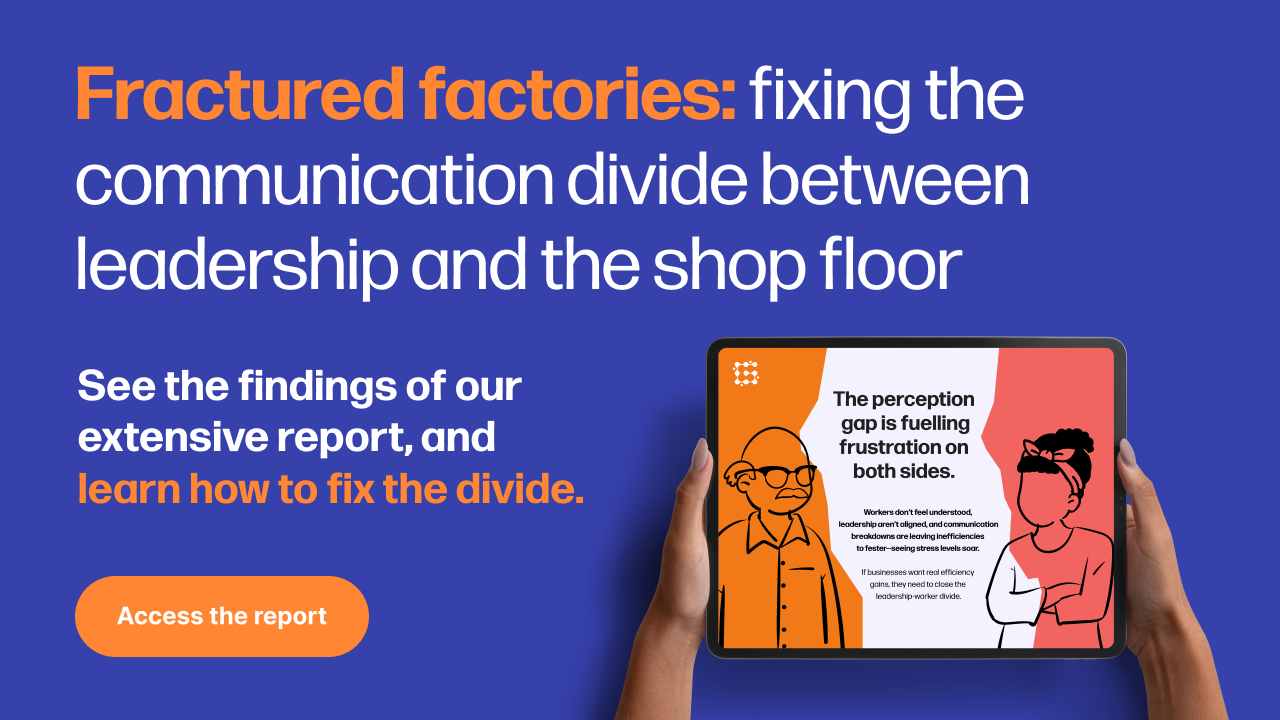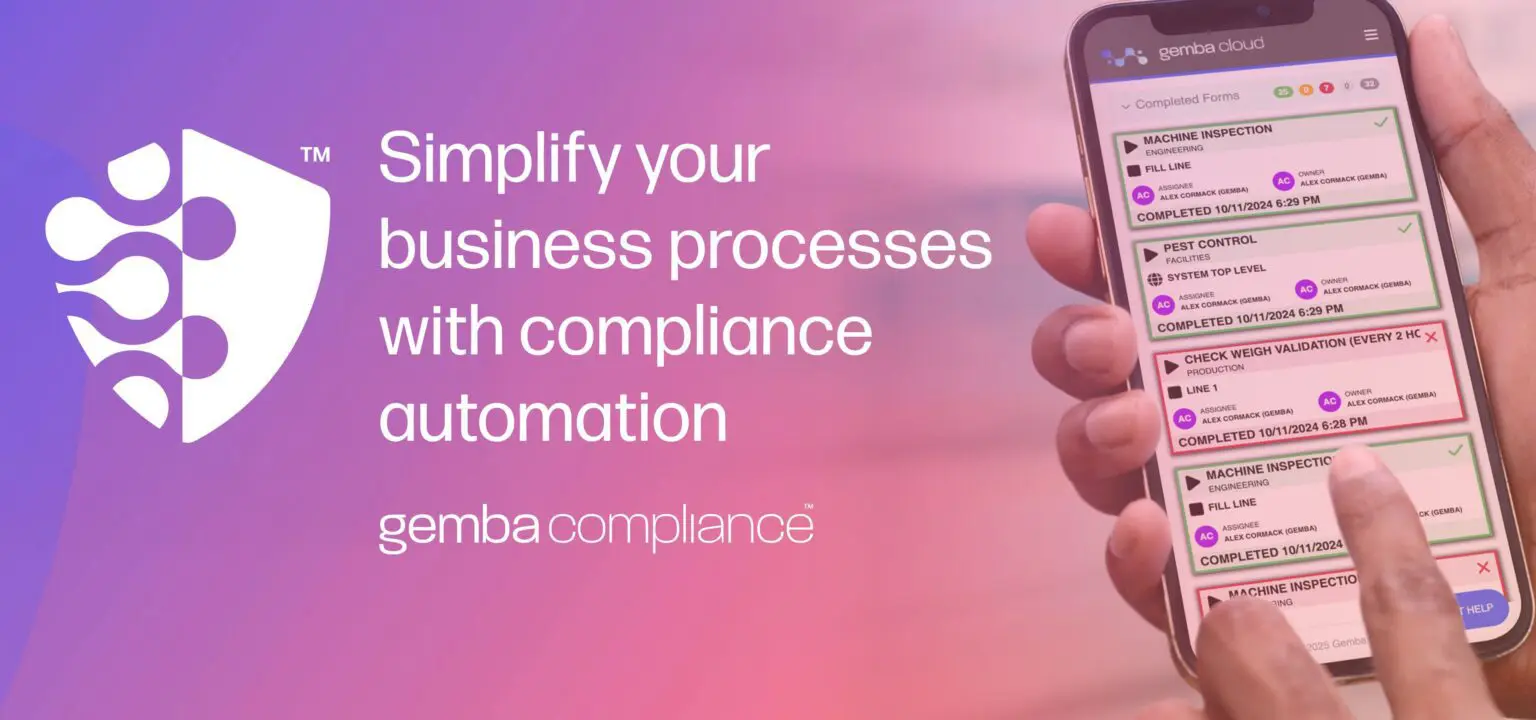
Labour is one of the biggest day-to-day costs for most manufacturers, but many still track it using spreadsheets, whiteboards, or gut feel. Without accurate data, small inefficiencies build up, productivity dips, and costs creep up without anyone realising why.
Dedicated labour tracking software solves these problems by providing clear visibility into workforce activities and performance. Automating data collection and analysis gives managers real-time insights, empowering better decisions, quicker responses, and improved operational efficiency across the factory.
What is labour tracking software?
Labour tracking software helps you monitor what your teams are working on, how long tasks take, and how shifts are performing, without relying on manual inputs. Unlike spreadsheets or paper logs, the software provides real-time, accurate workforce information without manual entry.
Typical features of labour tracking software include:
- Time-on-task capture: Recording precisely how long each employee spends on specific activities.
- Job role and skill tracking: Aligning workers’ skills and roles to the appropriate tasks.
- Shift comparisons: Analysing performance between teams, shifts, or production lines.
- Productivity insights: Visual analytics highlighting bottlenecks, downtime, or inefficiencies.
With reliable data, labour tracking software helps manufacturers can see exactly how work is getting done on the shop floor, a crucial first step to making improvements that stick.
For example, accurate labour tracking data directly supports better decision-making around team efficiency and performance management.
Key benefits of using labour tracking software in manufacturing
![]()
Implementing labour tracking software provides manufacturers with tangible operational benefits, significantly surpassing traditional manual methods. This includes:
Real-time visibility of team performance
It gives supervisors a real-time view of how each shift, line, or team is performing. Managers and supervisors can spot issues such as workload imbalances or unexpected downtime as they occur, rather than waiting for end-of-shift reports or manual analyses.
Real-time insights, often visualised through a bespoke KPIs, help teams resolve problems quickly and maintain production efficiency. That means problems get spotted and sorted faster before they start affecting output.
Data-backed resource planning
Labour tracking software enables better resource planning and workforce management decisions by providing accurate, data-backed insights. Instead of relying on anecdotal information or manual spreadsheets, managers can base decisions on clear data about attendance, productivity, and skill distribution.
This accuracy simplifies shift scheduling, training allocation and performance reviews. With the right data, shift planning, training, and task assignments become easier and more likely to match what’s actually needed on the floor.
Reduced admin and human error
Manual tracking methods inevitably create errors through incomplete records, misreported data, or delayed entries. These mistakes can lead to poor planning, lost productivity, and unnecessary costs.
Automation cuts back on paperwork and chasing down updates, freeing up time for more valuable work. This automation virtually eliminates human error in record-keeping, freeing managers to focus on improvement activities rather than data management, ultimately resulting in lower overheads and more accurate decision-making.
Enhanced employee accountability and fairness
When performance is tracked clearly and fairly, it’s easier to reward strong work and spot where support is needed. Employees clearly understand performance expectations, and managers can objectively evaluate performance based on real data rather than subjective judgment.
Clear, consistent data ensures fair recognition and rewards, boosting morale and engagement across the workforce. It creates a fairer environment where everyone knows how their work contributes and how they’re being measured.
How it supports continuous improvement
![]()
Labour tracking software directly supports continuous improvement (CI) and lean manufacturing initiatives. Detailed workforce data is critical for identifying areas of waste, inefficiencies, or bottlenecks within operations.
For example, it might show that a task takes twice as long on night shift or that certain downtime patterns happen more on certain lines. This data becomes essential for lean and kaizen activities, enabling teams to accurately target improvement projects and measure their impact.
When labour data integrates ith tools like Gemba’s production monitoring software, it becomes even easier to spot patterns and track improvements over time.
What to look for in a labour tracking solution
When choosing a labour tracking solution, manufacturers should prioritise features that add genuine operational value. Key capabilities to consider include:
- Real-time reporting: Software should offer immediate insights into workforce activity, enabling timely decisions.
- Mobile compatibility: The ability to input and access data via mobile devices ensures flexibility and convenience on the shop floor.
- Ease of use: User-friendly software with minimal training requirements ensures rapid adoption by teams.
- Integration capabilities: Seamless connectivity with existing manufacturing systems (MES, ERP, production monitoring) allows comprehensive insights and coherent decision-making.
These features help teams get up and running quickly without slowing down production.
How Gemba supports smarter labour tracking
![]()
Gemba Solutions offers labour tracking software specifically tailored to manufacturing needs, integrating seamlessly with broader operational systems such as production monitoring, overall equipment effectiveness (OEE) tracking, and manufacturing dashboards.
Gemba’s Connect Manufacturing Software enables manufacturers to quickly assess workforce performance at individual, team, or shift levels. Its intuitive dashboards display real-time labour data clearly, highlighting opportunities for efficiency improvements or identifying workload imbalances immediately.
Because it links with your production and quality tools, Gemba helps you connect the dots between what’s happening on the line and why.
Why this matters for your business
Labour tracking software makes it easier to see what’s happening on the shop floor, fix issues faster, and plan more effectively without adding extra admin. Unlike manual methods, digital labour tracking consistently delivers accurate, real-time data, helping manufacturers quickly address inefficiencies, reduce errors, and drive continuous operational improvement.
It helps reduce wasted time, boosts accountability, and gives managers the facts they need to plan better.
Manufacturers should evaluate their current approach to labour management, considering how transitioning from spreadsheets or paper logs to dedicated labour tracking software could simplify workforce management, improve productivity, and enhance operational efficiency.
Exploring solutions like Gemba’s platform can support your business in optimising labour performance management, delivering sustained improvements across the entire manufacturing operation.
Want to see how it works on the ground? Arrange a demo with Gemba.





